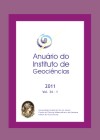Modern Diatom Distributions in Guanabara Bay Sediment and Oceanic Areas, Rio de Janeiro (Brazil)
DOI:
https://doi.org/10.11137/2011_1_64-87Abstract
One hundred and fifty three superficial sediments were collected in Guanabara Bay to physical-chemistry and diatom analyses in the ambit to Monitoring Project (CENPES/PETROBRAS). A total of 146 taxa of diatoms were identified where the most frequent taxa in Guanabara Bay were Amphora spp., Coscinodiscus spp. and Navicula yarrensis var. yarrensis. These species are potentially harmful that might harm fisheries and mariculture during blooms. The values of ecological indexes like richness and diversity followed the estuarine gradient were the higher values were found in the mouth and de low in the inner part. The multivariate analyzes permitted recognize seven diatom assemblages in the bay. The DCA analyze shows the most influence in the distribution of assemblages were the depth and pH. The diatom assemblages analyze proved to be an efficient tool in the environmental diagnosis of Guanabara Bay.Downloads
Download data is not yet available.
Downloads
Published
2011-01-01
How to Cite
Laut, L. L. (2011) “Modern Diatom Distributions in Guanabara Bay Sediment and Oceanic Areas, Rio de Janeiro (Brazil)”, Anuário do Instituto de Geociências. Rio de Janeiro, BR, 34(1), pp. 64–87. doi: 10.11137/2011_1_64-87.
Issue
Section
não definida
License
This journal is licensed under a Creative Commons — Attribution 4.0 International — CC BY 4.0, which permits use, distribution and reproduction in any medium, provided the original work is properly cited.















